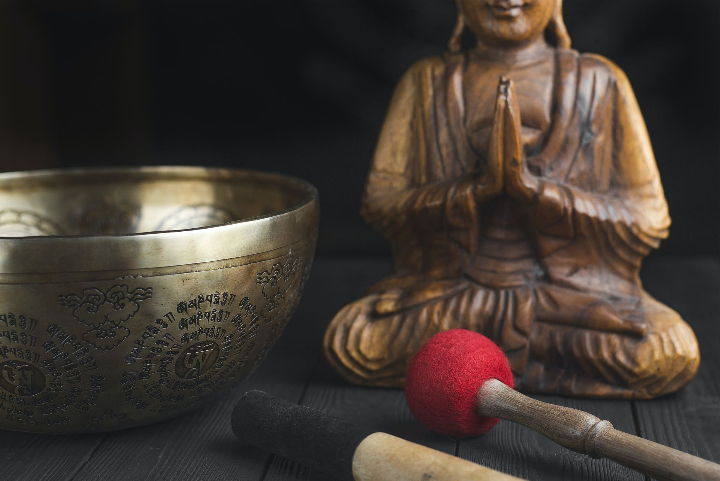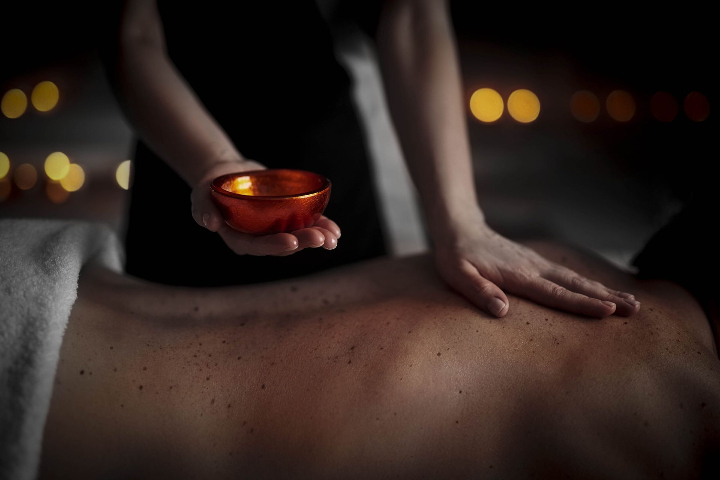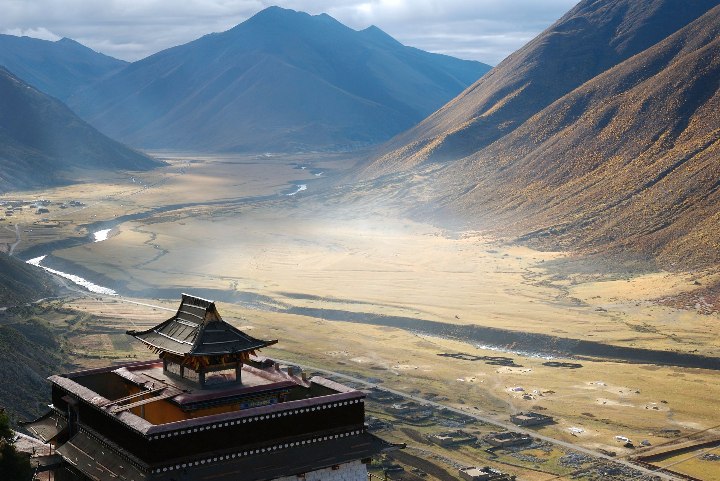“Yes, I remember it perfectly, it was a Saturday in April with very high temperatures in Valencia, almost summer, when I visited COBRE29 SPA for the first time. What initially attracted my attention the most was an acoustic ritual carried out with a Tibetan bowl, which the masseuse proposed to me as soon as I started and in the tea room: The sensation of heat quickly disappeared in me, and I internalized a very refreshing sensation, beneficial and relaxing. It was therefore – always following the instructions of my guide and host – of caressing with a rod, or copper drumstick, the circular edge of the aforementioned Tibetan bowl. Turning clockwise first, thinking positively about myself; and later in the opposite direction, meditating serenely on others. "Everything happened in a very calm, therapeutic and relaxing way, pleasantly listening with the outer ear, and with the inner ear as well, to the very healthy vibrations of copper."
Indeed many musical instruments, mainly wind and percussion instruments, are made of alloys such as brass or bronze. Also the beautiful and therapeutic Tibetan bowls. This is because copper has excellent sound properties that allow the sound to last longer. Additionally, copper has antimicrobial properties that are very useful in mouth-mounted instruments such as trumpets and trombones.
Tibetan bowls are known to promote relaxation. The sound they emit is appreciated by sound therapy to reduce stress and improve sleep. Its sounds help stabilize blood pressure and combat depression.
We are talking of course about music therapy.
The Tibetan bowls that have been and are made in Nepal have always contained two main metals: 78/80% copper and 20-22% tin. This alloy is known as bronze (B20) and has been used for centuries in the construction of Tibetan bowls and bells.
Today's Tibet remains a major producer of copper, currently under the exploitation of Chinese mining companies, as is the case in the Qulong region. This is where the copper usually comes from, which is then alloyed into Tibetan household utensils.
Not only in Western music therapy, but also in Tibet and the Himalayas, sound therapy applied with bowls has a very powerful healing and spiritual effect, in addition to being of great beauty, being used in most rituals. religious and social events.
But what exactly is Tibetan bowl therapy? It is a sound massage performed with these metal instruments (Tibetan bowls) . They are used by hitting or rubbing them with a drumstick and produce a sound loaded with harmonics of a healing nature.
A common option in certain music therapy rooms is for the patient to stretch out on a stretcher, close their eyes, and focus exclusively on the sound that the therapist produces when playing the Tibetan bowls.
Another option, which is the one that is mostly used in COBRE29 SPA, is that the music of the Tibetan bowls, and similar instruments, integrally inhabits the spaces (hi-fi), and thus also inhabits us anatomically, creating an atmosphere that It links therapy and acoustic pleasures with the pleasant visual reality prevailing in the SPA. The aesthetic-therapeutic benefits, integrated through the five senses, are then reinforced with synergy and synesthesia.
Tibetan bowls were created with consciousness and intention by the sages and monks of the Himalayas, and are used by guides in ceremonial rites, astral travel, the awakening of consciousness and in the healing of diseases on both a physical, psychic, mental and emotional level. and spiritually. Traditionally Tibetan singing bowls were used for meditation and healing in monks' monasteries.
The genuine Tibetan bowls are made of an alloy of seven metals: copper, silver, gold, mercury, tin, lead and iron and forged by hand.
All therapy based on sound is based on the principle of resonance, by which a more intense and harmonious vibration infects another that is weaker, dissonant or unhealthy. The principle of resonance designates the ability of vibration to reach further, through vibratory waves, and cause a similar vibration in another body. That is, it is the ability of one frequency to modify another frequency.
Women who live together or spend many hours together end up adjusting their hormonal rhythms. The army knows that when they cross a bridge they cannot go in formation, due to the danger of it breaking, so they abandon the formation until they have finished crossing it: These are examples of the principle of collective resonances and synchronicity...
Additionally, sound modifies our brain waves, helping us enter other levels of consciousness, where states of spontaneous healing and states of inner elevation are possible, making us more receptive to self-healing.

The third factor of sound therapy with Tibetan bowls is harmonics. Every time a sound is produced, harmonics appear. These harmonics have highly beneficial effects on our body and our energy field.
Although we cannot hear frequencies that are outside our auditory field, nor can we produce sounds or frequencies that are outside our capacity, through harmonics we can nevertheless resonate with them.
People who have experienced a sonic massage with Tibetan singing bowls experience greater mental clarity, increased creativity, greater concentration, greater vision of the future, and a great sense of peace. The result is a more focused and productive individual, happier, more serene, more balanced, more at peace with himself.
There is a space of peace within us and Tibetan bowls help us enter it, they help us resonate with our true consciousness or higher self and with that feeling of peace and serenity that we all carry within us.
On a physical level, Tibetan bowls are used to recharge our energy system, to relieve suffering and pain (including emotional pain), to eliminate inflammation, for states of anxiety, anguish, stress, depression, sadness, insomnia, hyperactivity.
Sound massages with copper allow biological systems to function with more homeostasis and balance; They calm the mind and thus the body and have emotional effects that influence neurotransmitters and neuropeptides, which in turn will help regulate the immune system, the natural healer within us.
According to the great Tibetan bodhisattva master Gwalwa Karmaza, the singing bowls of Tibet emit the sound of emptiness, which is the sound of the universe manifesting. They are the symbol of the unknowable and as an alloy they date back to the time of the historical Buddha, Shakyamuni (560 – 480 BC).
The origins of Tibetan singing bowls and their detailed history are lost in the distant past and are surely a gift from the Bon shamanic religion, which existed in Tibet several centuries before the arrival of Buddhism.
Many centuries later, and on the shores of the Mediterranean, we have the privilege of having, in the COBRE29 SPA baths, an absolutely original soundscape, a mixture of very elaborate, meditated and conscientiously designed sound compositions; soundtracks to which live acoustic interventions are added, carried out by the COBRE29 hosts and guides; These in turn will invite us to physically and emotionally feel, ourselves, those bowls, xylophones and other oriental instruments, and achieve the holistic, healing and relaxing benefit of the sonic massage of copper.

